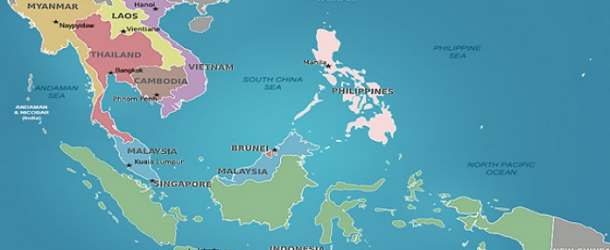South-East is home to not just the fastest growing economies but is also a source of one of the most protracted and simmering territorial conflicts. Contradictions around Paracel Islands and Spratly archipelago rest at the heart of tensions between the countries of the region. In the meantime, territorial claims against energy-rich regions of the South China Sea are only the part of a bigger problem the problem. The actual causes of the differences are more deeply rooted.
It is about the geopolitical needs of the countries that view ensuring of territorial interests in the South China Sea as a long-term insurance for self-interests. The ambitions of Beijing that aims to impose its hegemony on the sub-region evokes fear on the part of small nations, parties to the conflict, and the world powers. The attempts by some countries to shift the conflict into the negotiation stage yielded no palpable results. Meanwhile, there is common understanding shared by all the stakeholders that the escalation of tensions would not contribute to the resolution of the situation. Under such circumstances, the small nations seek to internationalize the conflict and place it under the auspices of the international law. Whereas China persistently aims to keep the issue in the regional framework and places its stakes in the regional balance of power.
The South-East Asia is one of the most dynamically developing regions of the world. Jim O’Neill, the analyst with the Goldman Sachs and the author of the famous “BRIC” acronym, identified 11 countries calling them the “Next Eleven”. According to him, those economies have the potential of transforming into the locomotives of world economy in the XXI century. Three of the countries from that list are in the South-East Asia – Indonesia, Philippines and Vietnam.
It is notable that two of the last “promising” countries continue to have political contradictions with the present center of the world economic growth – People’s Republic of China. Furthermore, there is an escalation tendency that leads to sporadic armed clashes. The most recently, in May 2014, when anti-Chinese attacks in Vietnam left businesses damaged and several people dead. Territorial disputes in the South China Sea are the reason for deepening mistrust in the PRC’s relations with some of its neighbors.
Owing to the increasing significance of the East-Asian region in the recent years, this has become one of the most debated issues in the world expert discourse and is regarded as a factor of potential destabilization of the regional situation, with destructive implications for the world economy and politics.
Territorial disputes in the South China Sea are attributed to the delimitation of the archipelagos of the Paracel Islands (subject of territorial claims between China, Vietnam and Taiwan) and Spratly (claimed by China, Vietnam, Taiwan, Philippines, Malaysia and Brunei). Certain pieces of dry land across this vast area were at different times invaded by the troops of adjacent countries. Although the claims of the parties exceed far beyond the boundaries of the controlled territories and are based on two arguments: historical ownership and the entitlement to exclusive 200-mile economic zone, under the UN Convention on the Law of the Sea (signed by all the parties of the region).
The greatest concern for the countries of the region is evoked by the Beijing’s claims that citing historical rights declared unconditional jurisdiction over the entire waters of the South China Sea. Considering the size of China and its capabilities, compared to other contenders, the reciprocal claims of smaller nations have receded to the background, with notable consolidation based on anti-China agenda and display of mutual support becoming apparent. Thus, it would be correct to view the territorial problem in the South China Sea as a standoff between China and the unofficial coalition of the number of the Southeast Asian nations.
From the moment the dispute emerged, there have been multiple statements by the foreign policy offices, official protests and public awareness campaigns aimed at affirming the determination to advocate own position. Nonetheless, despite the engagement of the public opinion, the situation in the region has remained relatively stable.
In the recent years, however, China moved from formal announcement of its rights to real actions, and primarily, to exploration of oil and gas fields on the shelf of the disputed islands, which led to an escalation of tensions. The course of events attests to the gradual transition of the conflict from the “simmering” to the active phase. Under these circumstances, Xi Jinping of China unexpectedly spoke of normalization of ties with Vietnam, presumably to undermine the anti-China platform of the Southeast Asian countries. The Vietnamese side welcomed such a course. That being said, doubts remain regarding the viability of a long-term normalization of China’s relations with Southeast Asian opponents and prospects of peaceful resolution of the situation with regard to the disputed islands.
The projection of a possible development vector of the regional situation requires the understanding of the goals pursued by the parties to the conflict. Frequently, the existing contradictions are explained by the competition over access to natural riches of the South China Sea, including oil and gas. However, this is only one of the aspects of rivalry. Given the great extent of interdependence, attributed to the modern world, features and trends in the international environment, and especially the peculiarities of changes in the world order structure, must be considered for accurate assessment of the goals.
The modern world is experiencing an unprecedented, by historical terms, transition period, which is coupled with the renewal of the geopolitical landscape and formation of the new balance of forces. This renewal is manifested mainly in the armed conflicts in different parts of the world, predominantly in the Near and the Middle East, Ukraine and the South Caucasus. Moreover, to a noticeable degree, there is an influence of the global processes on the extent of securing self-interests of the United States’ main rival for world leadership – China. Particularly, the Middle East continues to be the main energy supplier for the East Asia and destabilization in this region entails substantial risks for Beijing.
In the meantime sporadic outbursts of conflicts of political nature in Ukraine and the countries of the South Caucasus are affecting the foreign policy positions of China’s neighbor and key ally in the international relations – the Russian Federation – weakening of which is not in China’s favor. Therefore, it’s not accidental that according to the assessments by some well-informed experts, the strategic objective of the West in destabilizing Ukraine and imposing of economic sanctions against Moscow could be not just the weakening of Russia itself, but perhaps more so to undermine the positions of its neighbor to the East.
According to Yaakov Kedmi, former chief of the Israeli intelligence agency – “Nativ”, “Today, it’s a continuation of the same policy (aimed at weakening of Russia), especially in the environment of strengthening ties between Russia and China. Thus, in order to undermine China’s posture in the standoff with the U.S., Washington, presumably, is focusing on the weakest link – Russia. This resembles a concentration of efforts on Syria in order to weaken Iran”.
Apparently, Beijing is concerned about potential destabilization at its borders, against the backdrop of obstructive Western policy in other parts of the world. That is why the main objective of the Southeastern direction of the Chinese strategy is not just a sole ownership of the energy resources of the South China Sea but also a provision of political and economic security, so essential for long-term sustainable development. In China, the achievement of goals is regarded through pressuring the America’s influence out of the region and securing own geostrategic dominance based on regional superiority and even leadership in the resource capacity. Resource issue is naturally instrumental and constitutes a major element in attaining strategic objectives of higher priority.
Perhaps this is why Beijing officially demands unconditional sovereignty of China not over just the island archipelagos but across the entire South China Sea. Control over this basin could provide a guarantee for enduring position of China on the Southeastern front. The farther away from its borders extends the PRC’s influence, the less vulnerable it is to external impact and certainly, more stable its posture becomes.
In the meantime, it is evident that China needs to substantiate, somehow, its claims over the water spaces sitting one thousand kilometers away from its sovereign territory because that will provide an opportunity of boasting strategic positions far beyond the national boundaries and extending all the way to the strategic Malacca Strait.
Despite the immense importance of the resource base of the South China Sea for the countries – opponents of China in the territorial dispute, their key goals also rest in the long-term stability and security domain and are not confined to the problem of access to the resources, regardless how vast they seemingly are. The Geostrategic importance of this water basin for all is that it provides freedom of navigation, energy supply, commodities movement and fishery. For Vietnam, whose entire shoreline is bounded by the South China Sea, it is also a matter of securing own defense capability.
Overall, from the standpoint of the small countries of the region, the consequences of China’s domination aspiration in the South China Sea are clearly visible. Apart from the oil-gas related disputes, they were particularly frustrated by the issuing new regulations by Beijing, which require foreign vessels engaged in fishery to obtain approval of the Chinese authorities in the event of fishing in the disputed waters. Apparently, as China’s posture in the South China Sea is growing, Beijing’s actions against its neighbors will be more relentless. For that reason, their primary objective becomes the maintaining of neutral status of this space.
Mistrust of the small nations towards China is completely understandable, just as their rightful aspiration to obtain durable guarantees of self-interests in the future. The former can only be ensured through legal recognition of their rights on the international level. That is why for these countries the issue of PRC’s official recognition of their sovereignty over the parts of the disputed islands is so urgent. Along with gaining resource shares, this would translate into maintaining of existing positions of these nations in the South China Sea.
The aforementioned objectives have strategic significance both for China and its opponents because at stake are the issues of long-term sustainable development and security. Nevertheless, owing to antagonism, inconceivability of mutually beneficial realization of the objectives identified by the parties becomes evident. It’s not surprising that in the years of existence of this problem the search for a compromise solution yielded no tangible results. Against such a backdrop, lately, the parties are increasingly opting for achieving their objectives through unilateral strategies that eschew direct confrontation.
Ferid YUSİFZADE
























































